Qualcomm Intros Snapdragon X Plus, Details Complete Snapdragon X Launch Day Chip Stack
by Ryan Smith on April 24, 2024 9:15 AM EST
As Qualcomm prepares for the mid-year launch of their forthcoming Snapdragon X SoCs for PCs, and the eagerly anticipated Oryon CPU cores within, the company is finally shoring up their official product plans, and releasing some additional technical details in the process. Thus far the company has been demonstrating their Snapdragon X Elite SoC in its highest-performing, fully-enabled configuration. But the retail Snapdragon X Elite will not be a single part; instead, Qualcomm is preparing a whole range of chip configurations for various price/performance tiers in the market. Altogether, there will be 3 Snapdragon X Elite SKUs that differ in CPU and GPU performance.
As well, the company is introducing a second Snapdragon X tier, Snapdragon X Plus, for those SKUs positioned below the Elite performance tier. As of today, this will be a single configuration. But if the Snapdragon X lineup is successful and demand warrants it, I would not be surprised to see Qualcomm expand it further – as they have certainly left themselves the room for it in their product stack. In the meantime, with Qualcomm’s expected launch competition now shipping (Intel Core Ultra Meteor Lake and AMD Ryzen Mobile 8040 Hawk Point), the company is also very confident that even these reduced performance Snapdragon X Plus chips will be able to beat Intel and AMD in multithreaded performance – never mind the top-tier Snapdragon X Elite chips.
Qualcomm will be launching this expanded four chip stack at once; so both Snapdragon X Elite and Snapdragon X Plus tier devices should be available at the same time. The company’s goal is still to have devices on the shelf “mid-year”, although the company isn’t providing any more precise guidance than that. With Microsoft's Build conference taking place in late May, and Qualcomm’s CEO, Cristiano Amon, set to deliver a Computex keynote in June, I expect we’ll get more specific details on timings around those two events. Meanwhile, Computex is a prime venue for Qualcomm and its partners to announce and showcase some retail laptop designs. So this is very much looking like a summer launch at the moment.
In the meantime, Qualcomm is already showing off what their Snapdragon X Plus chips can do with a fresh set of live benchmarks, akin to their Snapdragon X Elite performance previews from October 2023. We’ll dive into those in a bit, but suffice it to say, Qualcomm knows the score, and they want to make sure the entire world knows when they’re winning.
Snapdragon X Chip Stack, X Elite Gets A Nerf, and the X Product Number Decoder
With the Snapdragon X family now comprised of four SKUs, the Snapdragon X Elite name on its own won’t do. So Qualcomm is giving all of the chips official product numbers. And as this is the first time Qualcomm has done this for PC SoCs, so comes with it the need to explain their product numbering scheme, and how to decode it.
Using Qualcomm’s flagship chip as an example, we have the X1E-84-100. With the first letter referring to the product family (Snapdragon X), the second letter/digit is the generation of the product – in this case, the first generation of Snapdragon X. So this is where we’ll see Qualcomm primarily incrementing their product numbering in future generations, how ever the company decides to define them.
Following that is the tier. Which at this time is Elite (E) or Plus (P).
Finally, we have the two sets of digits. The first set is the SKU digits, basically ordering chips by performance. And the second set of digits is being reserved by the company for now for future use. For all of the chip SKUs being introduced today, everything will have the same -100 suffix, regardless of tier or performance.
It’s at first blush a very sterile naming system, but logical. The reserved portion of the SKU names makes for relatively longwinded names overall – especially as it’s not contributing anything important right now – but I don’t expect Qualcomm put it there without some plans already on paper to put it to good use. In practice, then, it’s going to be the first two segments that are the informative segments for the time being.
With that in mind, let’s take a look at Qualcomm’s Snapdragon X launch stack.
| Qualcomm Snapdragon X (Gen 1) Processors | |||||||
| AnandTech | CPU Cores | All Core Max Turbo | Two Core Max Turbo | GPU TFLOPS | NPU TOPS | Total Cache (MB) |
Memory |
| Snapdragon X Elite | |||||||
| X1E-84-100 | 12 | 3.8 GHz | 4.2 GHz | 4.6 | 45 | 42 | LPDDR5X-8448 |
| X1E-80-100 | 12 | 3.4 GHz | 4.0 GHz | 3.8 | 45 | 42 | LPDDR5X-8448 |
| X1E-78-100 | 12 | 3.4 GHz | 3.4 GHz | 3.8 | 45 | 42 | LPDDR5X-8448 |
| Snapdragon X Plus | |||||||
| X1P-64-100 | 10 | 3.4 GHz | 3.4 GHz | 3.8 | 45 | 42 | LPDDR5X-8448 |
The Snapdragon X chip family tier are being split up on the basis of the number of CPU cores. All of the Elite chips are fully-enabled parts (on the CPU side) with all 12 Oryon CPU cores enabled. Meanwhile the sole Plus chip (thus far) drops two of those CPU cores, leaving it with 10.
Heading up the chip stack is the fastest, fully-enabled Snapdragon X Elite chip, the X1E-84-100. This features all of the Snapdragon X Elite’s performance and functionality, akin to what Qualcomm has been demonstrating thus far, including the 45 TOPS NPU and the 42MB of total system cache.
Compared to their October demos, however, there are a couple of important points to point out – areas where the chip specs have been downgraded. First and foremost, the peak dual core clockspeed on the chip (what Qualcomm calls Dual Core Boost) will only be 4.2GHz, instead of the 4.3GHz clockspeeds we saw in Qualcomm’s early demos. The LPDDR5X memory frequency has also taken an odd hit, with this chip topping out at LPDDR5X-8448, rather than the LPDDR5X-8533 data rate we saw last year. This is all of 85MHz or 1GB/second of memory bandwidth, but it’s an unexpected shift since 8448 isn’t a normal LPDDR5X speed grade.
Qualcomm has not offered any explanation for the lowered specifications. I can only presume that they’ve had a harder time yielding chips with CPU cores that can hit 4.3GHz than the company was initially expecting, especially looking at the rest of the chip stack. High IPC CPU designs are inherently at odds with high clockspeeds, so with Qualcomm’s Nuvia design team targeting some very high IPCs with Oryon, it seems they’re going straight for their practical clockspeed limit with their top chip.
Following the flagship SKU is the X1E-80-100. This part is still fully-enabled from a hardware standpoint, but it drops down in both CPU and GPU clockspeeds. On the CPU front, the dual-core turbo boost is now 4.0GHz, a 200MHz (5%) decrease; meanwhile the all-core turbo limit is 3.4GHz, a more sizeable 400MHz (11%) drop from the flagship Elite chip.
As for the GPU, the rated throughput in this SKU is 3.8 TFLOPS, some 0.8 TFLOPS (17%) below the flagship chip. At present, Qualcomm has not disclosed the number of GPU blocks/cores in their Snapdragon X die, so it’s unclear whether this is just a reduction in GPU clockspeeds, or if they’re disabling GPU cores in the process. Though by PC standards, it would be unusual not to have at least one chip SKU that can be used for salvaged dies with a failed GPU core.
Rounding out the Elite SKUs is the X1E-78-100. This chip takes a further hit to CPU performance in lightly-threaded workloads. Specifically, this SKU does away with Dual Core Boost entirely, meaning none of the 12 Oryon CPU cores on the chip clocks higher than the all-core turbo limit of 3.4GHz. Compared to the X1E-80-100, this is a 600MHz (15%) clockspeed drop in lightly threaded workloads – or 800MHz (19%) drop overall compared to the flagship Elite chip.
Finally, we have the sole Snapdragon X Plus chip SKU, the X1P-64-100, this chip is identical to the bottom-tier Elite chip in everything but the CPU core count; rather than all 12 Oryon CPU cores, only 10 are enabled here. Otherwise it’s feature-identical to the Elite chips, and none of the memory bandwidth, cache, or even the NPU has been touched. Even the GPU performance/configuration is identical to the mid and low Elite chips. So the only thing this chip loses out on, on paper, is multithreaded performance.
Overall, Qualcomm’s decision to stratify their Snapdragon X chip stack in this manner is certainly an interesting one. When it comes to configuring their down-level SKUs, AMD and Intel have traditionally cut their CPU clockspeeds by smaller increments, pairing that with a broader CPU core count increase. Core Ultra-H’s peak clockspeed drops by 12%, for example, while Ryzen 8040HS is just 6%.
The net impact of this is that each step down the Elite SKU stack is going to come with a significant drop in either lightly-threaded or heavily-theaded performance (depending on the SKU), with bigger drops than what we normally see. The drop in Dual Core Turbo clockspeeds is especially surprising, since system responsiveness is typically closely tied to lightly-threaded CPU performance. So we’ll see how this all bears out in performance benchmarks once the Snapdragon X family launches.
Otherwise, most other aspects of the entire stack are constant throughout. Qualcomm never touches their NPU configuration, the cache configuration, or the memory speeds. On which note, the fact that the 10 core Plus still has 42MB of total cache all but confirms that Qualcomm is using some kind of shared L2 for their CPU core clusters, which is why losing two CPU cores doesn’t impact the L2 cache. I suspect we’re looking at 12MB of L2 per cluster, with a 6MB LLC above that, but there are several permutations that could work here – and which Qualcomm hasn’t further specified at this time.
Qualcomm also isn’t officially confirming whether the Snapdragon X Plus uses the same die as the Snapdragon X Elite. But given the incredibly similar specifications and that all four SKUs are launching at the same time, it’s a foregone conclusion that this is all using Qualcomm’s initial Snapdragon X die. Overall this is par for the course for the company, as they have historically declined to disclose when their mobile SKUs have shared a die. The company is still focused on features and SKUs first and foremost, with a tendency to downplay the underlying hardware.
With that said, these SKU announcements do provide us with a bit more detail on some of the other minor hardware features of the SoC. Qualcomm’s display controller – part of their Adreno DPU block – supports 4 display outputs. This allows for a single internal display at up to 4K@120Hz, along with 3 external displays at up to 4K@60Hz. Alternatively, 5K@60Hz is supported when using just 2 external displays. Given that Qualcomm is intending for Snapdragon X to compete with Apple’s M3 SoC, a chip somewhat infamous for only supporting two displays in total, Qualcomm is eager to point out their display controller advantage.
Conversely, driving the image acquisition side of the SoC will be a pair of Qualcomm’s 18-bit Spectra ISPs. As this isn’t a smartphone SoC and won’t be attached to anything quite like a flagship smartphone camera, the capabilities aren’t quite as hefty as what we see with the likes of the Snapdragon 8 family. But the Snapdragon X chips will still support either a single camera sensor at up to 64MP, or dual sensors at up to 36MP each. And while primary storage for these devices will be NVMe SSDs going over the previously disclosed PCIe 4 bus, Qualcomm is also confirming that the SoC offers UFS 4.0 and SD 3.0 memory interfaces, which in this case would be used for removable storage.
Finally, it should be noted that Qualcomm isn’t assigning any TDPs to these SKUs. Officially, the entire Snapdragon X range is suitable for everything from thin-and-light ultrabooks to high-TDP productivity laptops, all depending on how an OEM decides to configure and cool the system. So there is no U/H/HS distinction here, as we see with AMD and Intel. That said, given that power consumption broadly scales with performance, the Plus is going to be the lowest-power chip, if only by virtue of having the lowest performance and clockspeeds.


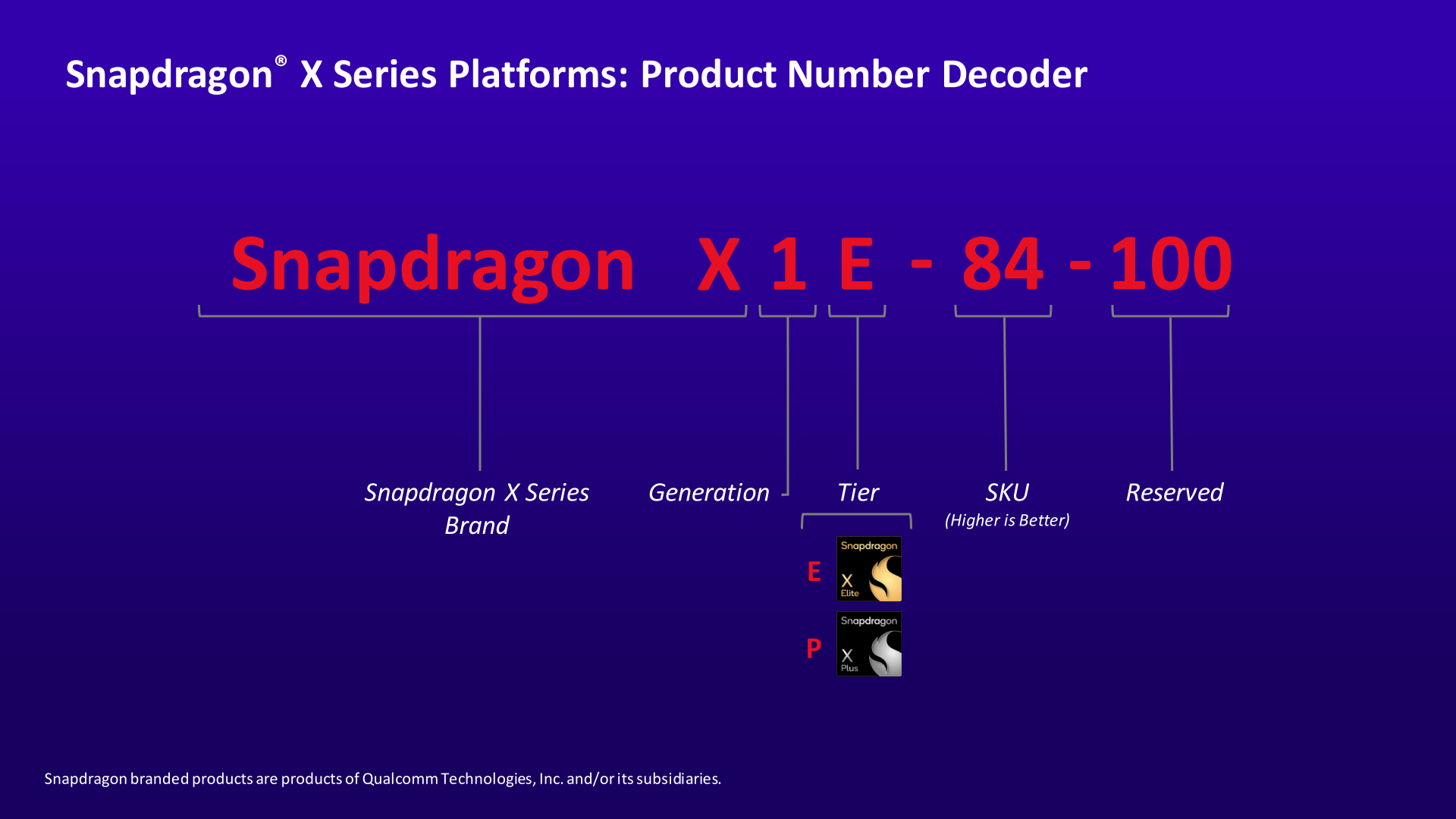
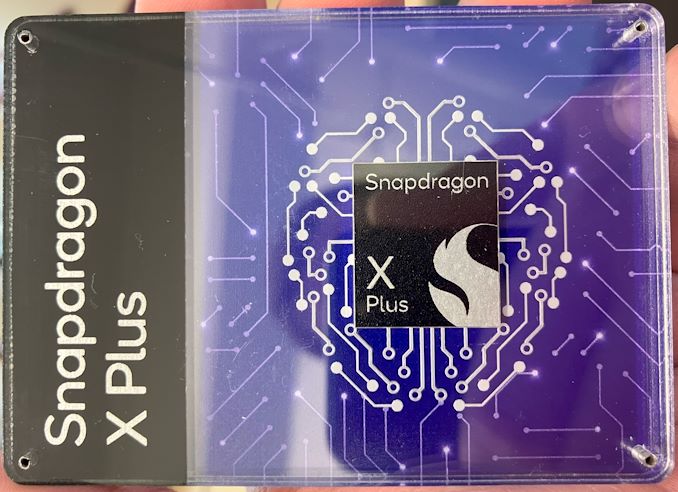
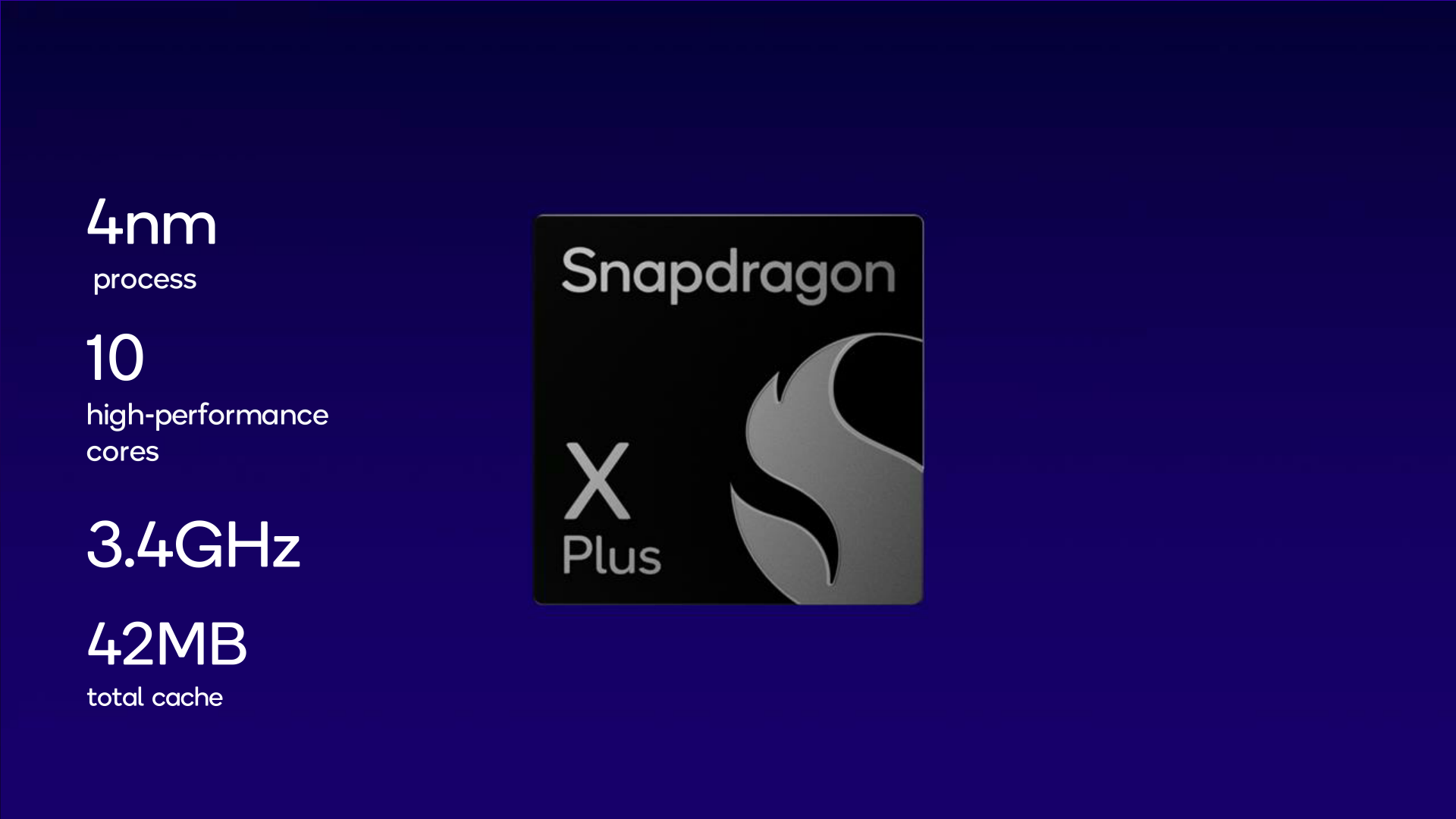
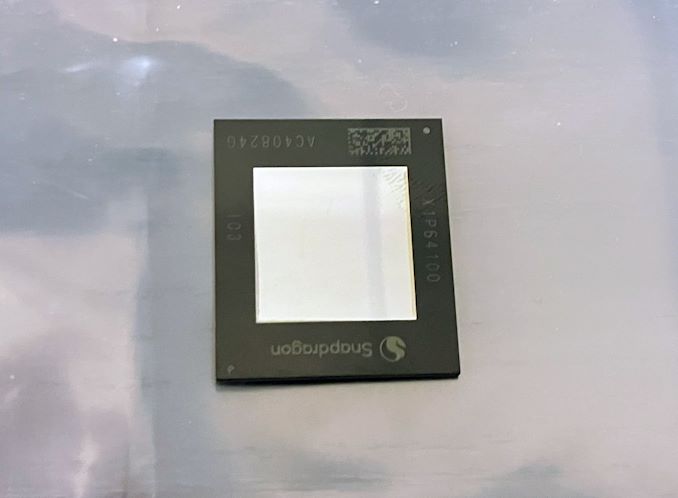
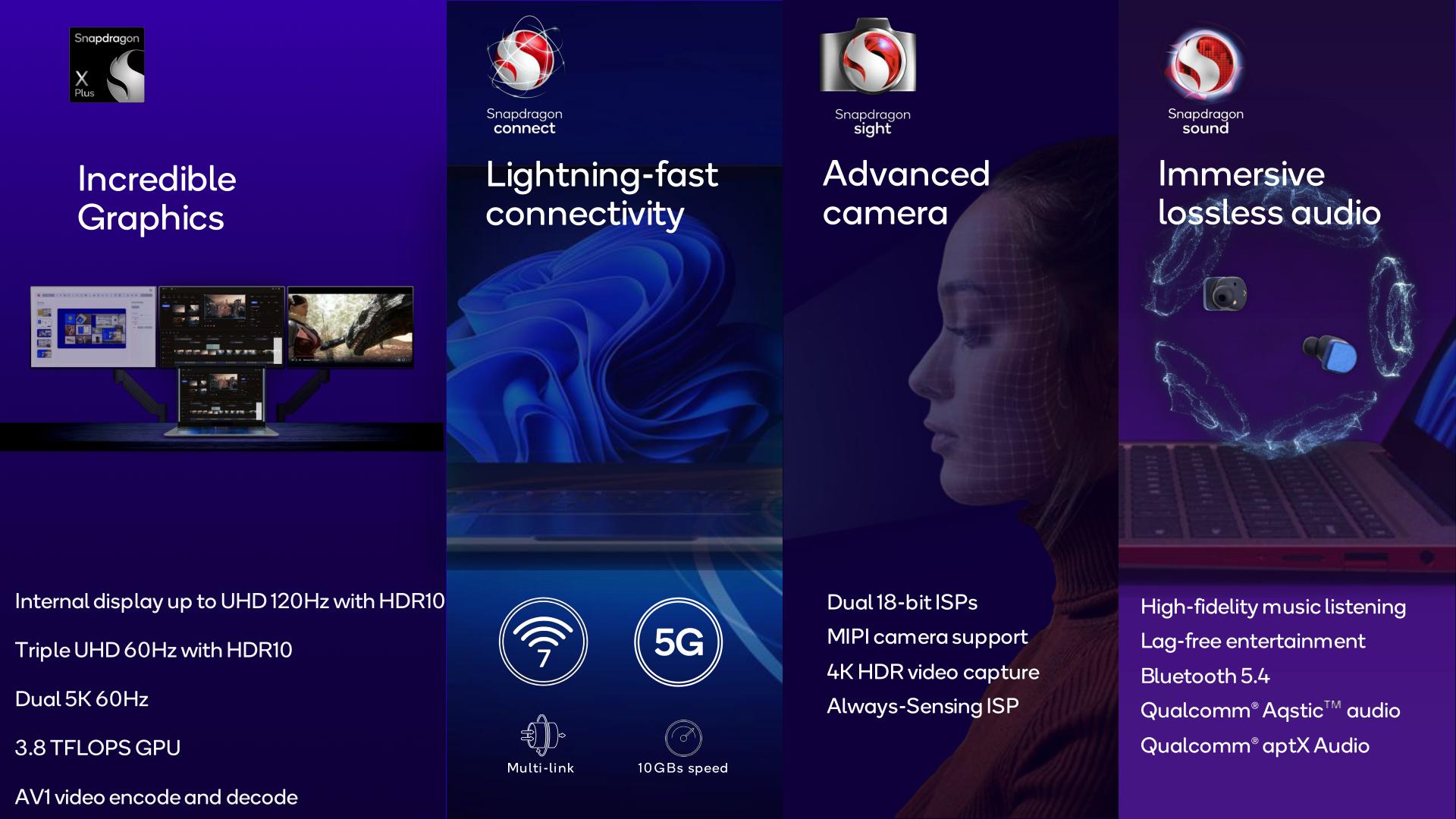








50 Comments
View All Comments
Eliadbu - Wednesday, April 24, 2024 - link
Looks like typical scumbag Qualcomm we love to hate. If it's the truth, other than it will be a flop, every competent true reviewer and not some shill influencer, will rip this product apart. What were they thinking? That they could get away with this? That people will forget their promises? That they make will make those bogus number a reality when it comes out? This is just sad, although I hate Qualcomm as a company, I see them as necessary evil to push efficency on windows machines, now all they do is drive me further into buying apple's Mac with their overpriced memory and storage configs. Replymeacupla - Wednesday, April 24, 2024 - link
You should take the numbers given by Qualcomm with a grain of salt, but you should also be weary of semiaccurate's recent reports.50%, if true, would not only be a total failure, it would be a litigation nightmare. Like way beyond the scope of number fudging that is legally allowed by the feds. Reply
Hifihedgehog - Thursday, April 25, 2024 - link
Andrei now does performance analysis for NUVIA. He needs no introduction and his work speaks for itself. I trust the numbers since the conditions are very transparently listed in the bottom notes including OS, memory speed, total platform/device power and so on. In fact, that 23 watt limit for QC’s thin and light reference device is impressive when you realize that also is the maximum power envelope for the display, memory and NVMe under full load.SemiAccurate cannot give specifics because there are none. I wouldn’t be surprised if Intel is trying to submarine Snapdragon X’s release and Charlie took the bait. His site became trash over the last 3-5 years and this is the tip of the iceberg of the drivel is shovels out these days. He couldn’t even get his web forum with years of subscriber content and discussion back online that his $1.5K/year subscribers wanted—so much for Charlie being tech savvy. Ignore that idiot and his keyboard warrior mind-numbing rants. Reply
haplo602 - Thursday, April 25, 2024 - link
Hmm ... well given the TDP numbers from the Qualcomm graph, I'd be suspicious a lot. How can the Ryzen 7940HS reach almost 100W when the official TDP is 35-54W ? Yes I know the PPT is higher but not 100W high, I think the maximum official PPT is 65W. Comparatively the Intel 155H can boost up to 115W yet the benchmark cuts of below 80W ?So did they measure power at the wall ? Then I wonder why since that is not comparable across devices and has no meaning what so ever when comparing CPUs ... I just don't buy the graphs when there is so much information missing. Reply
meacupla - Thursday, April 25, 2024 - link
There are a few mini-PCs that allow you to manually set the power limits of a 7840HS/7940HS.The total power tends to top out at 90W, with around 40W going to the GPU. Reply
eastcoast_pete - Thursday, April 25, 2024 - link
While I value and respect Andrei's expertise and really miss his analysis here, he is now an employee of Qualcomm; and being an employee means that you have to tow the company line, only speak out publicly if authorized to do so, or you get fired and then sued for damages to boot! Employment contracts are full of clauses that are there to prevent any employee from speaking out of turn, especially if you work in R&D. That is not just so at Qualcomm, but is true at pretty much any larger corporation, at least in the US. Replyeastcoast_pete - Thursday, April 25, 2024 - link
Didn't see your post, I just put that also in my post here. Definitely something worth reading, and for Qualcomm to respond to! ReplyTerry_Craig - Wednesday, April 24, 2024 - link
I don't believe the supposed launch is just this pathetic copy and paste of suspicious numbers provided by Qualcomm. How horrible... they didn't send any laptops for review? Replykn00tcn - Wednesday, April 24, 2024 - link
nowhere did anyone state this is a launch,it's a product brief about a couple months before launchthe very first sentence even says "preparing for mid-year" Reply
Terry_Craig - Wednesday, April 24, 2024 - link
This is a big circus tent set up by Qualcomm clowns. Reply